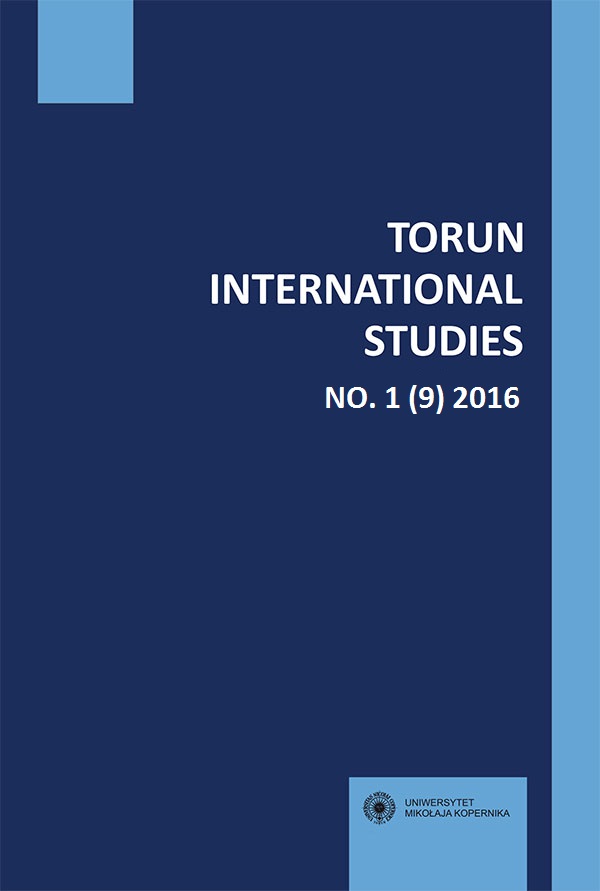CYBERWARFARE AND RESPONSIBILITY OF STATES
DOI:
https://doi.org/10.12775/TIS.2016.007Keywords
cyber attack, cybersecurity, states’ responsibility, use of force, due diligenceAbstract
The aim of this paper is to provide a general insight into the questionable nascence of the international custom in the context of cybersecurity and the most relevant attempt to draft a document regarding the subject matter from the Western perspective, taking into account the lack of any widely accepted international convention regarding the cyber security. Moreover, the paper analyzes legal requirements for finding a state responsible for a cyber attack by means of Article 2 of the ILC’s Articles on Responsibility of States for Internationally Wrongful Acts. Specifically, it analyzes legal requirements necessary to attribute a certain conduct to a state. Also, it considers if cyber attacks in general can be treated as the use of force within the meaning of article 2.4 of the UN Charter. Moreover, it examines whether the doctrine of due diligence can be used while accusing a state for a breach of its international obligations.References
Ortega A. E. L. Álvarez (2015). The rules of attribution: general considerations, Barcelona: Revista para el Análisis del Derecho, 1.
Bederman D. J. (2001) International law frameworks, New York: Foundation Press.
Condorelli L., Kress C. (2010) The Law of International Responsibility. In Crawford J., Pellet A., Olleson S. (eds.), The Law of International Responsibility, Oxford/New York: Oxford University Press.
Dinstein Y. (2001). War, Aggression and Self-defence, Cambridge: Cambridge University Press.
Farer T. J. (1985) Political and Economic Coercion in Contemporary International Law, American Journal of International Law, 79.
Geiger R.H. (2011). Customary International Law In The Jurisprudence of The International Court of Justice: A Critical Appraisal. In Fastenrath U., Geiger R., Khan D-E., Paulus A., Schorlemer S. von, Vedder C. (eds.), From Bilateralism to Community Interest. Essays In Honour Of Judge Bruno Simma, Oxford: Oxford University Press.
Giles K., Monaghan A. (2013). Legality in Cyberspace: An Adversary View, Army War College Carlisle Barracks PA Strategic Studies Institute.
Gray C. (2008). International Law and The Use of Force, Oxford: Oxford University Press.
Green J.A. (2015). Regulation under the jus ad bellum. In Green J.A., Cyber Warfare: a Multidisciplinary Analysis, New York: Routledge.
Hathaway O. A., Crootof R., Levitz P., Nix H., Nowlan A., Perdue W. and Spiegel J. (2012). The Law of Cyber-Attack, California: California Law Review, 100.
Hessbruegge J. A. (2003-2004) The Historical Development of the Doctrines of Attribution and Due Diligence in International Law, New York: New York University Journal of International Law and Politics, 36.
Kilovaty I. (2014) Cyber Warfare and The Jus Ad Bellum Challenges: Evaluation In The Light of The Tallinn Manual on The International Law Applicable to Cyber Warfare, American University National Security Law Brief, 5.
Kulesza J. (2009) States responsibility for cyber-attacks on international peace and security, Polish Yearbook of International Law.
Margulies P. (2015). Sovereignty and Cyber Attacks: Technology’s Challenge to the Law of State Responsibility, Melbourne: Melbourne Journal of International Law, 14.
Nollkaemper A. (2015). Attribution of forcible acts to states: connections between the law on the use of force and the law of state responsibility. In Blokker N., Schrijver N. (eds.)¸ The Security Council and The Use of Force, Leiden/Boston: Martinus Nijhoff Publishers.
Schachter O. (1986). In Defense of International Rules on the Use of Force, Chicago:The University of Chicago Law Review ,53.
Shackelford S. (2009). From Nuclear War to Net War: Analogizing Cyber Attacks in International Law, Berkeley: Berkeley Journal of International Law, Vol 25.
Schmitt M.N., O’Donnell B.T. (eds.) (2002). Computer Network Attack and International Law, Newport, RI: Naval War College International Law Studies, 76.
Schmitt M.N. (ed.) (2013). The Tallinn Manual on The International Law Applicable to Cyber Warfare, Cambridge: Cambridge University Press.
Schmitt M.N. (2013) Tallinn Manual on The International Law Applicable to Cyber Warfare, Cambridge: Cambridge University Press.
Schmitt M.N. (2015) In Defense of Due Diligence in Cyberspace, Yale: Yale Law Journal Forum, 125.
Schlutter B. (2010). Developments in customary international law. Theory and the Practice of the International Court of Justice and the International ad hoc Criminal Tribunals for Rwanda and Yugoslavia, Leiden/Boston: Martinus Nijhoff Publishers.
Waxman M.C. (2011). Cyber-Attacks and the Use of Force: Back to the Future of Article 2(4), Yale: The Yale Journal of International Law, 36.
Wheeler D. A., Larsen G. N. (2003). Techniques for Cyber Attack Attribution, Alexandria, VA,: Institute for Defense Analyses.
Downloads
Published
How to Cite
Issue
Section
Stats
Number of views and downloads: 536
Number of citations: 0



